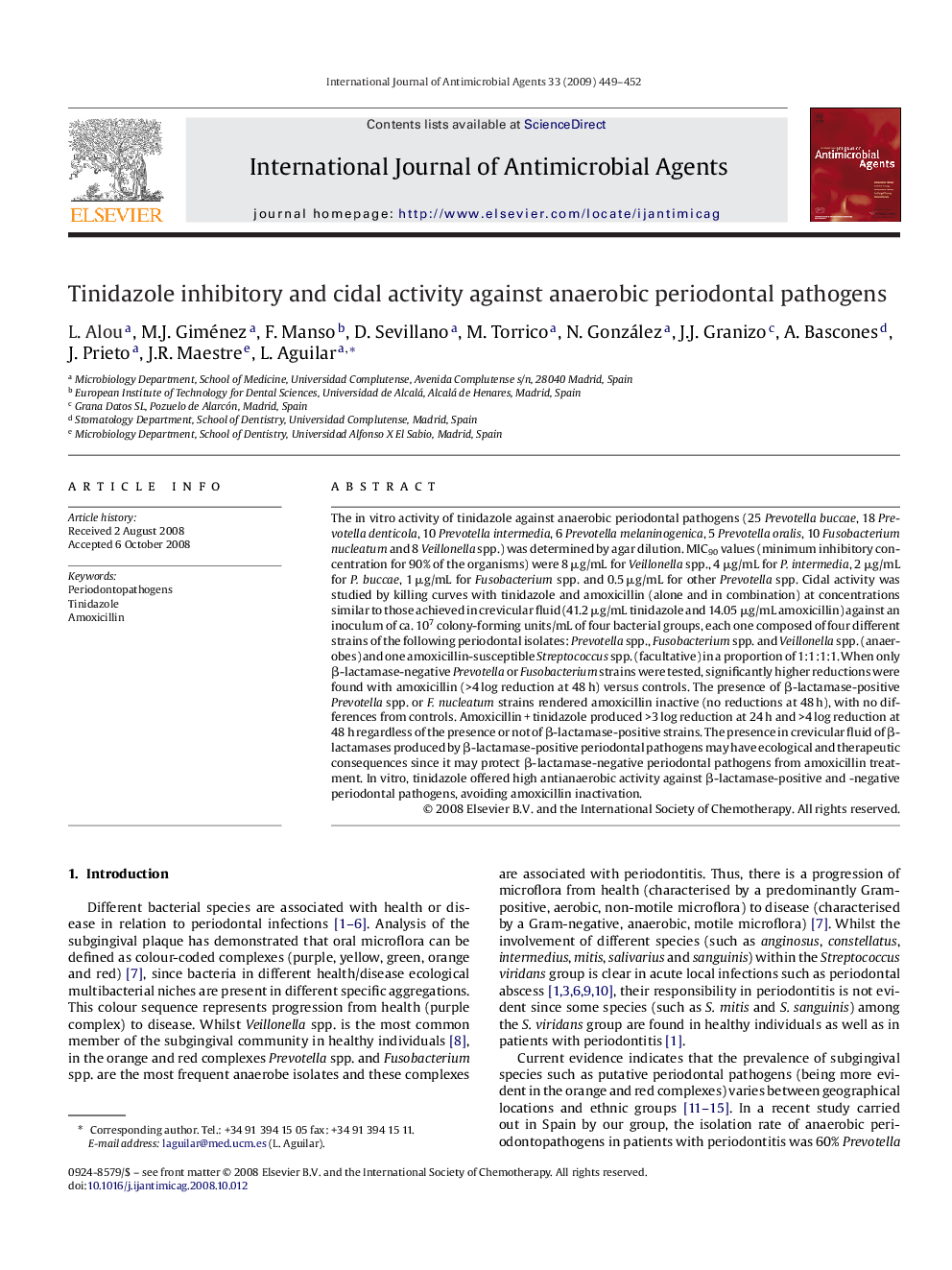| Article ID | Journal | Published Year | Pages | File Type |
|---|---|---|---|---|
| 6118525 | International Journal of Antimicrobial Agents | 2009 | 4 Pages |
Abstract
The in vitro activity of tinidazole against anaerobic periodontal pathogens (25 Prevotella buccae, 18 Prevotella denticola, 10 Prevotella intermedia, 6 Prevotella melaninogenica, 5 Prevotella oralis, 10 Fusobacterium nucleatum and 8 Veillonella spp.) was determined by agar dilution. MIC90 values (minimum inhibitory concentration for 90% of the organisms) were 8 μg/mL for Veillonella spp., 4 μg/mL for P. intermedia, 2 μg/mL for P. buccae, 1 μg/mL for Fusobacterium spp. and 0.5 μg/mL for other Prevotella spp. Cidal activity was studied by killing curves with tinidazole and amoxicillin (alone and in combination) at concentrations similar to those achieved in crevicular fluid (41.2 μg/mL tinidazole and 14.05 μg/mL amoxicillin) against an inoculum of ca. 107 colony-forming units/mL of four bacterial groups, each one composed of four different strains of the following periodontal isolates: Prevotella spp., Fusobacterium spp. and Veillonella spp. (anaerobes) and one amoxicillin-susceptible Streptococcus spp. (facultative) in a proportion of 1:1:1:1. When only β-lactamase-negative Prevotella or Fusobacterium strains were tested, significantly higher reductions were found with amoxicillin (>4 log reduction at 48 h) versus controls. The presence of β-lactamase-positive Prevotella spp. or F. nucleatum strains rendered amoxicillin inactive (no reductions at 48 h), with no differences from controls. Amoxicillin + tinidazole produced >3 log reduction at 24 h and >4 log reduction at 48 h regardless of the presence or not of β-lactamase-positive strains. The presence in crevicular fluid of β-lactamases produced by β-lactamase-positive periodontal pathogens may have ecological and therapeutic consequences since it may protect β-lactamase-negative periodontal pathogens from amoxicillin treatment. In vitro, tinidazole offered high antianaerobic activity against β-lactamase-positive and -negative periodontal pathogens, avoiding amoxicillin inactivation.
Related Topics
Life Sciences
Immunology and Microbiology
Applied Microbiology and Biotechnology
Authors
L. Alou, M.J. Giménez, F. Manso, D. Sevillano, M. Torrico, N. González, J.J. Granizo, A. Bascones, J. Prieto, J.R. Maestre, L. Aguilar,
